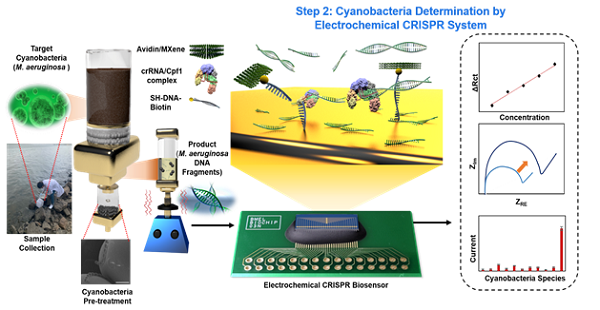Revolutionizing Water Safety: On-Site Cyanobacteria Detection and Gene Editing
- admin
- 2023-11-30
- 1160
The Research Team of Professor Taek Lee (Department of Chemical Engineering) Develops Monitoring System for Harmful Cyanobacteria (Pre-Treatment Kit, Sensor) that can be used on-site at the Han River
- Development of Electrochemical CRISPR
Biosensor for Detecting Harmful Cyanobacteria that can be used immediately in
Rivers and Lake Basins -
- Development of Gene-Editing-Based
Detection Platform Suggests Potential Applications to Other Environmental
DNA -
- Published in the Prestigious International
Academic Journal Biosensors and Bioelectronics (IF: 12.5, JCR: 4.1%) -
The
research team of Professor Taek Lee (Department of Chemical Engineering) has
developed a field-ready system for
detecting the most widely spread harmful cyanobacteria, Microcystis aeruginosa
(M. aeruginosa). This system includes a graphene oxide-based pretreatment filter and an electrochemical clustered
regularly interspaced short palindromic repeats (CRISPR) biosensing platform
(Ga-Hyun Kim, first author).
The
research was supported by the Korea Environmental Industry & Technology
Institute (2020003030001) through Aquatic Ecosystem Health Management Program of
the Ministry of Environment (MOE), by the Industrial Core Technology
Development Program (20009121) of the Ministry of Trade, Industry, and Energy,
and the National Research Foundation of Korea (2021R1C1C1005583). The research
results were published under the title "Fabrication of graphene
oxide-based pretreatment filter and Electrochemical-CRISPR biosensor for the
field-ready cyanobacteria monitoring system" in Biosensors and
Bioelectronics, a leading academic journal in the biosensor field (IF: 12.5,
JCR: 4.1%). (Reference: https://doi.org/10.1016/j.bios.2023.115474)
